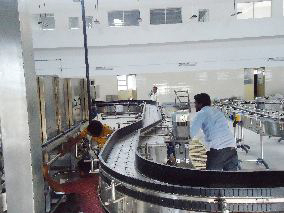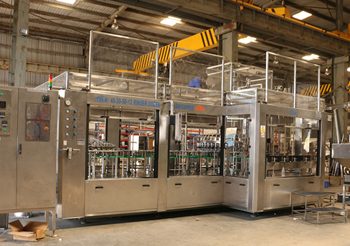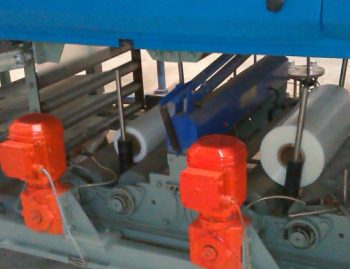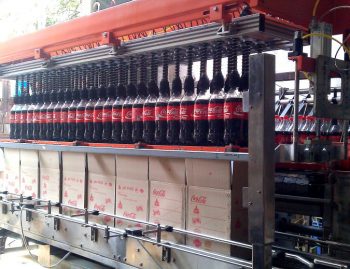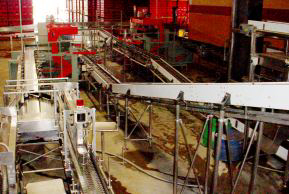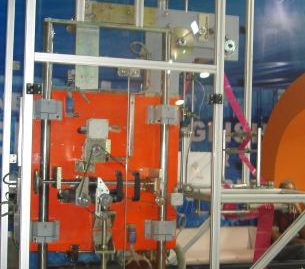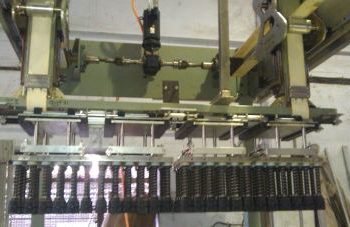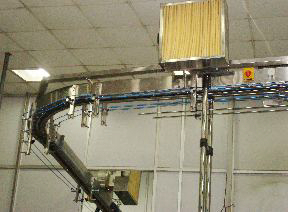
A bulk material handling system's principal job is to transport and provide bulk materials to processing plant units on a continuous basis. Storage and mixing are examples of secondary functions.
Raw materials (such as bulk solids and powders) are received by trucks, ships, or trains in a typical bulk material handling system. Then, using a conveyor system, they are unloaded into a yard or storage facility. Typically, the materials are kept in stockpiles.
An automatic reclaimer or a gravity-reclaim arrangement consisting of reclaiming tunnel hoppers and feeders can be used to reclaim material from the stockpile. The material is subsequently transported to a processing facility. This is true for most bulk material handling systems, whether they are used in processing or to move or store a finished bulk product.
A belt conveyor is one of the most common types of bulk material handling equipment. Although there are many other types of conveyors, such as screw, chain, and pneumatic, the belt is the most widely utilized. In many different processing industries, belt conveyors constitute the backbone of bulk material handling systems. Stacker/reclaimer machines, hoppers, chutes, feeders, and magnetic separators are examples of other material handling equipment.
Read More : Everything You Need To Know About Submerged Scraper Conveyors (SSC)
The function of the belt conveyor in bulk material handling systems
A belt conveyor, which is designed for continuous operation, can handle a wide range of capacities and distances, and its length can range from a few meters to tens of kilometers. The belt loops around a pulley at each end of the conveyor. This is the most frequent type of belt conveyor. To move the belt and carry the materials, one pulley (typically at the conveyor's head) is attached to a drive unit. Conveyors with three or more pulleys, as well as those with two or more drive pulleys, are also available. They are, however, most commonly utilized in specialized applications.
The belt, which serves two purposes in belt conveyors, is used to confine conveyed items and to transmit force (in the form of tension) to move the load. A belt conveyor belt is also one of the most expensive components. Many elements should be considered in cautious selection, including the materials to be handled, corrosion, impact, tension, strength, and elongation.
Maintenance of bulk material handling belt conveyors
The primary belt conveyor components, such as idlers, rollers, pulleys, bearings, shafts, and belts, must work under dynamic loads and extreme conditions to preserve reliability. As a result, if they are badly designed or produced, they are likely to fail frequently. Rolling element bearings are widely used in various equipment and can have a limited life, even as little as a few months if they are subjected to dynamic or unexpected stresses that are not acceptable for their design. Shafts are comparable to shafts.
Belts can also be damaged or destroyed when subjected to loads that are not adequate for their design, when exposed to corrosion, or when used in situations that are not appropriate for their material. Conveyor belt design, operation, and reliability must take into account a variety of other elements. Dust and pollutants, for example, are common in processing areas. This equipment can be harmed and ruined if better seals are not used for bearings and other components. On the other hand, if all of these components are properly designed and selected, they can provide years of trouble-free service.
To extend the life of numerous components, such as idlers and rollers, appropriate accessories should be used to clean the belt at the feed and discharge points. Belt cleaners are critical to the conveyor's reliability, safety, and general environmental conditions, as well as the conveyor's surroundings.
Bulk material processing with a belt conveyor
The drive unit of a conveyor can be designed in a variety of ways. A direct-coupled motor gearbox or a direct- or parallel-shaft drive, operating the drum through a suitably sized coupling, are used in traditional designs. Startup capability, particularly the demand for a startup at full load (when the conveyor is completely loaded with materials), is an important issue to consider when designing and sizing drive units. A fluid coupling is used on many small and medium-sized conveyors to make starting and transient operations easier. Variable speed drives are commonly used on large and very large conveyors.
The motorized drum is another concept that has lately been employed for some conveyors. The electric motor, gear unit, and bearings form a complete driving unit inside the drum shell of the pulley, which provides protection. This device powers the belt directly, eliminating the need for an additional motor and coupling, which are required in traditional setups. They're very popular in newly refurbished and remodeled apartments.
Conveyors should be compact and lightweight in general, making the motorized drum design a desirable choice. However, conveyors have some benefits and drawbacks. For some applications, they provide compact and better-protected drive units. Access and maintenance, on the other hand, maybe difficult, and there are some size and design limitations.
Motorized drums with a diameter of up to 900 millimeters and a power of up to 150 kilowatts have been manufactured as approximate hints. Overall, motorized drum units are unique designs that should be employed in areas where traditional drive systems are useless or inconvenient. Other than that, traditional patterns should be employed.
